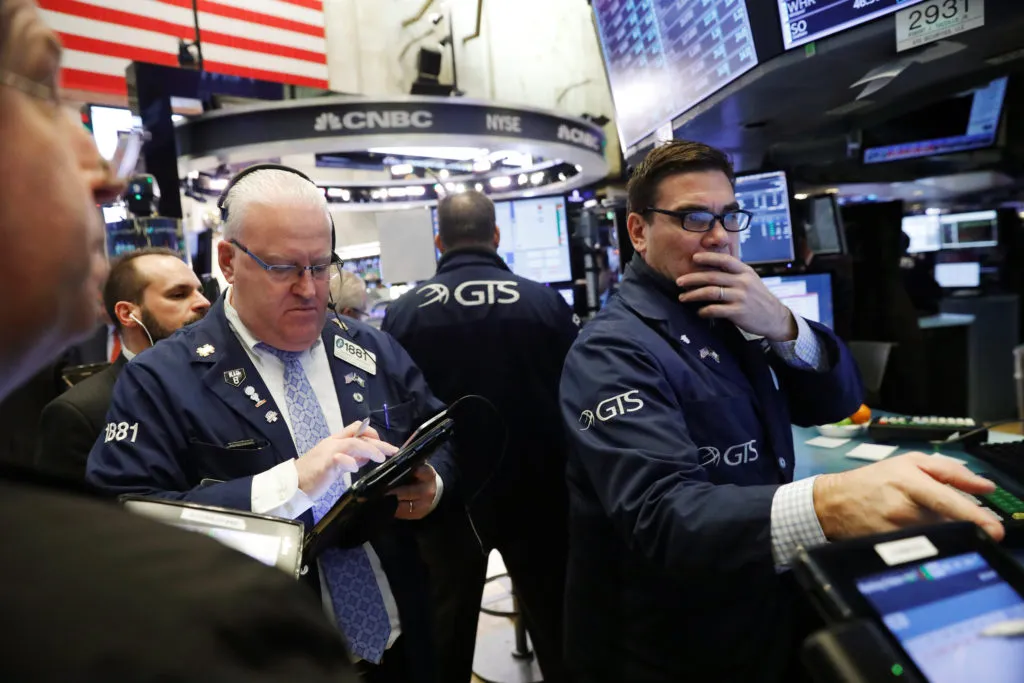Hedging Costs Surge as $16 Trillion S&P 500 Rally Meets Fed Uncertainty
Friday’s delayed inflation report reinforced expectations that the Federal Reserve will cut interest rates at its upcoming policy meeting. But despite the growing confidence in a dovish Fed, investors aren’t declaring victory just yet.
A key derivatives indicator tracking the cost of bearish versus bullish options has been trending higher, even as the S&P 500 Index hovers near record territory. After watching the benchmark add roughly $16 trillion in value over the past six months—despite persistent warnings—traders are showing fresh signs of caution. President Donald Trump’s unpredictable trade threats have only added to the uncertainty, even as negotiators prepare diplomatic wins for both Washington and Beijing ahead of this week’s meetings in Asia.
At the same time, emerging credit concerns among regional banks have revived uneasy memories of Silicon Valley Bank’s collapse, while the market’s AI-driven optimism faces a critical test as five mega-cap tech giants prepare to report earnings.
Even the Federal Reserve, typically a source of reassurance, isn’t providing much clarity. The ongoing government shutdown that began Oct. 1 has left officials without key federal data, leaving them to operate with limited visibility—despite Friday’s inflation release. Private-sector data suggests that the U.S. economy is losing momentum, particularly in the labor market. A string of layoff announcements from Target, General Motors, and Amazon has amplified those concerns.
“Cracks in the rally are starting to appear,” said Stefano Pascale, head of derivatives strategy at Barclays Plc. “At the macro level, investors are growing more cautious as tariff risks resurface and fears of another SVB-style crisis creep back into focus.”
So far, however, the market has been resilient. The S&P 500 jumped nearly 1% on Friday, marking its second straight weekly gain. Earlier this month, Trump’s renewed tariff threats sparked a 2.7% selloff one that was quickly reversed. The index is now on track for its sixth consecutive monthly advance.
Still, volatility is making a comeback. October, historically one of the market’s bumpiest months, has seen sharper swings. The VVIX Index which gauges the volatility of the Cboe Volatility Index sits nearly 5% above its 20-year average, despite pulling back from its monthly highs. Meanwhile, the Cboe SKEW Index, a barometer of demand for downside protection, remains near a two-month peak. This suggests that traders are paying up for put options relative to calls, signaling growing demand for hedges against potential market drops.
“We think markets may be borrowing from future returns,” said Megan Horneman, chief investment officer at Verdence Capital Advisors. “We’re holding a larger cash position and adding some liquid hedge fund exposure to protect against downside risk because valuations look stretched.”
The loudest bubble warnings are concentrated in areas tied to the AI boom, particularly among the “Magnificent Seven” mega-cap tech names, chipmakers, and power companies that have fueled this year’s rally. Rather than selling these winners, many investors are paying higher premiums for marketwide protection.
According to Barclays, the ratio of S&P 500 Index skew to single-stock skew is near one of its widest points in more than a decade. The broad-market skew ranks in the top 76th percentile of readings over the past 15 years, while single-stock skew sits in the bottom 11th percentile a rare divergence seen only about 10% of the time.
This defensive stance makes sense given the packed week ahead. While a Fed rate cut is virtually guaranteed, investors will dissect Chair Jerome Powell’s comments for guidance on the 2026 policy outlook. Then comes a wave of earnings reports from Apple, Amazon, Alphabet, Meta, and Microsoft companies that have accounted for a large share of this year’s market gains.
“Investors are on edge,” said Brian Madden, chief investment officer at First Avenue Investment Counsel. “They’re watching closely for any signs of how much companies are actually spending on AI and whether those investments are translating into profits.”
Even so, FOMO fear of missing out remains powerful. Traders continue to chase technology shares, keeping the broader rally alive despite heightened volatility in individual stocks.
“If Big Tech delivers upbeat results, that could spark another round of upside momentum,” Pascale said. “It might deepen the divergence between single stocks and indexes, as AI optimism outweighs macro risks. But trade tensions haven’t disappeared and they’ll take time to resolve.”
One major challenge for both policymakers and investors is the lack of timely data. “We’re basically flying blind right now,” Madden noted. “With the government shutdown, we’re missing critical pieces of the economic puzzle.” While he’s trimmed exposure in select insurance stocks, Madden said he isn’t rushing to move large sums into cash just yet.
For now, markets are brushing off the noise. Even Trump’s renewed threats against Canada on Friday barely registered, as dip buyers quickly stepped in.
“You don’t want to be caught off guard if the market melts up,” said Chris Murphy, co-head of derivatives strategy at Susquehanna International Group. He’s seen heavier trading in SPY put spreads a classic hedge against downside risk alongside increased volatility buying ahead of both the inflation data and this week’s Asia-Pacific summit. At the same time, investors are loading up on call spreads tied to the Magnificent Seven, maintaining bullish exposure to the year’s biggest winners.
“If markets can get through both events unscathed,” Murphy added, “we could see another year-end rally take shape.”

Subscribe to our newsletter!
As a leading independent research provider, TradeAlgo keeps you connected from anywhere.








